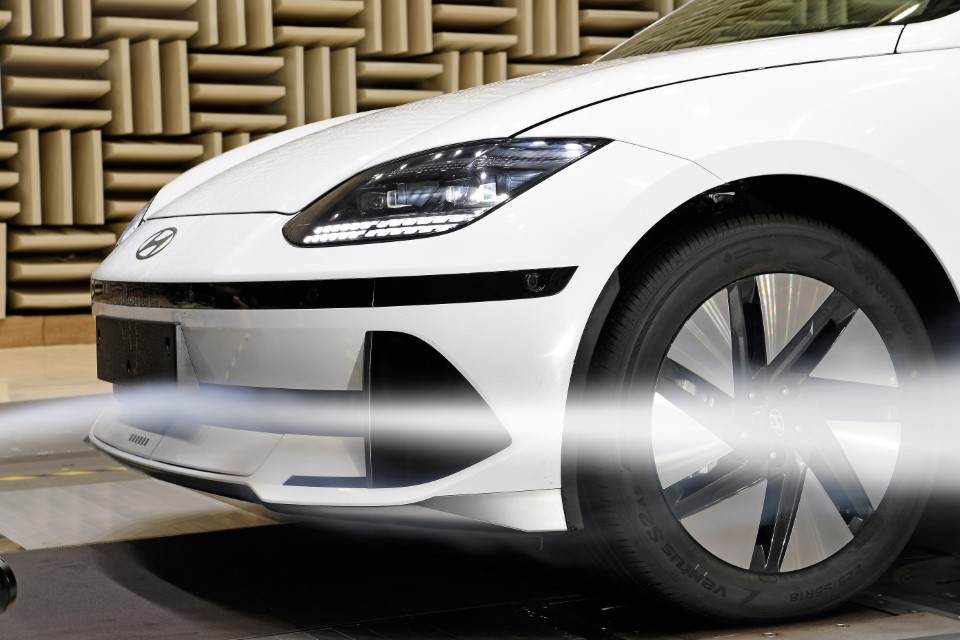FRANKFURT: The Hyundai Ioniq 6 delivers an impressively low 0.21 drag coefficient and 614km (WLTP-rated) on a single charge.
It achieved this through 1930s-style aerodynamic design and technological advances that are functional and aesthetically pleasing.
Designers also used "morphing technique" to develop optimal rear spoiler shape and several other advanced aerodynamic solutions
While aerodynamic efficiency is important for every vehicle’s fuel economy, it is especially critical for an EV’s AER due to the weight of the battery system.
By excelling at aerodynamic performance, Ioniq 6 delivers what Hyundai’s designers call ‘emotional efficiency’ with simple yet sensuous curves and technological advances that are both functional and aesthetically pleasing.
Simon Loasby, Hyundai’s Head of Styling, cites the 1947 Stout Scarab, Phantom Corsair and Saab Ursaab as major influences on Ioniq 6’s sleek design. Those iconic ‘Streamliner’ cars epitomise the functionally efficient aesthetic on wheels. It’s easy to see how the symmetry and relative simplicity of their contoured shapes found their way onto Hyundai’s new Electrified Streamliner.

Another key influence was the Supermarine Spitfire, a famous World War II British fighter plane. Designers applied a Spitfire-inspired winglet to the side of Ioniq 6’s rear spoiler to absorb the air flow from the roof and reduce drag by minimising vortices at the spoiler’s tip. This technology also effectively reduces the eddy currents generated from the side of the vehicle, helping to reduce drag.
The car itself has a streamlined shape like the wing of an airplane, so when running fast, lift is generated aerodynamically by the difference in pressure between the top and bottom of the vehicle. The downforce generated by Ioniq 6’s rear spoiler reduces lift even during high-speed driving to ensure stability.
Once Hyundai’s Design team finished its initial work on Ioniq 6’s exterior, they entered the wind tunnel, facing winds of up to 200 km/h generated by a 3,400hp fan, to chase another 10 per cent of efficiency with the help of Hyundai’s aerodynamic engineers.
For the rear spoiler and several other advanced aerodynamic solutions, they used what is known as the ‘morphing technique’, which is a shape transformation technology, and computational fluid dynamics (CFD) analysis using a supercomputer.

This allowed the designers to select the optimal spoiler shape from about 70 different options. It also enabled the application of an active air flap, wheel air curtains, wheel gap reducers, separation traps and wheel deflectors to problem areas.
The aerodynamic design is executed extensively, even underneath the car. Ioniq 6 is equipped with an undercover that blocks the front of the lower part to improve air flow, and the most important item in the lower part is the diffuser under the rear bumper.
Besides the full cover of the undercarriage, Hyundai’s efforts to achieve better aerodynamics is evident in the optimised front wheel deflector and minimised wheel guard gap. In addition, the shape of Ioniq 6’s wheel deflector was optimised, and the underbody covering was carefully finished to complete the aerodynamic performance.
“In the EV era, air resistance is more important than any other performance,” says Min Byung-hoon, Executive Vice President and Director of Vehicle Performance Development at Hyundai Motor Company. “Through their collective efforts, Hyundai’s aerodynamic engineers and designers have achieved with Ioniq 6 a new benchmark for Hyundai and the Ioniq dedicated EV line-up brand.”














